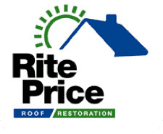With so many choices when it comes to roof types and materials, how do you decide which one is best for your home? There is an enormously long list of roof types to choose from, including: Shingles (wood, shake, slate, asphalt, asbestos, rubber, solar), tiles, (ceramic, clay, concrete, terracotta), polyester and metal (corrugate galvanized iron or steel, copper), and concrete.
Every selection has specific benefits in terms of installation cost, lifespan and maintenance concerns as well as weight issues and insulation benefits. The first thing you need to do in order to make the right decision is research the many roof types available and examine your personal, aesthetic desires mixed in with your budgetary requirements.
Know, however, that any new roof will significantly improve the value of your property in the eyes of future buyers, so the choice you make now will eventually affect your financial future when you recoup the value of your home through a sale.
The Best Roof Types for Adelaide’s Climate
Given that the Australian storm season has become a major player in the life of your roof, you may want to take weather into consideration when choosing appropriate roof types. For this reason, many Adelaide homeowners are choosing tiles or slate shingles made from clay, metal, concrete and terracotta.
These materials are incredibly resilient to wind and flying debris damage and have an overall lifespan of around 50 years. If your neighbourhood is prone to bush fires, you should note that tiles are fire resistant as well. UV light can also damage wood, which means that your clay or terracotta roof will be able to withstand discolouration and fading, as well as the drying and cracking that can occur due to the harsh sunlight.
If your home’s structural integrity can’t handle the added weight of tile but you still desire the unique look of this building material, then consider metal tiles that are painted to mimic the appearance of terracotta or clay. Metal is equally as resilient, but weighs considerably less, although you may run into maintenance and roof repair fees down the road.
Or as an alternative to metal, check out synthetic slate (a rubber composite) as a weight-friendly alternative.
Green Options for Your Roof and Lifestyle
If you plan to collect rainwater to increase the efficiency of your home, note that clay and terracotta tiles contain no chemicals that can leach into the runoff. As well, they are made from renewable sources of energy, to add to the environmental benefits.
Another trend that is popping up in Australia is the so-called “green roof” or “eco roof.” In fact, the Adelaide zoo is quite active in this pursuit and owns and maintains many green roofs in the region. In some cases, green roofs are made entirely out of living vegetation and soil.
These types of roofs provide effective insulation from the cold as well as the hot sun. They can also be used for urban gardening projects to provide green space for a home that has smaller front and back yards. If reducing your carbon footprint is a priority for your lifestyle, then take a serious look at the green option.
The Classic Look of Wood Shingles and Shakes
A popular choice among designers and architects is the rustic look of wood shingles and shakes. In some cases, they seek out reclaimed wood from previous sources in order to maintain the vintage quality of a house’s look.
If you favour a pastoral appearance over a contemporary feel, then this is the way to go. With proper maintenance, your wood shingle roof can last up to 50 years and can offer a high resistance to rot and insect infestation. As well, fire retardants and chemical preservatives are applied to increase the material’s resilience to the hazards facing your roof.
They also provide a unique look to each home as colour variations make for a random appearance. All that being said, they require more care and will most likely have a much shorter lifespan than their clay or metal counterparts.
Metal Isn’t What You’d Expect It to Be
Most people think of metal as unattractive and utilitarian, and think that it should primarily be used for industrial and commercial buildings. These days, however, metal is making a comeback as a design choice because of how versatile it is.
Metal can be formed to resemble shakes, clay tiles, shingles or even Victorian tiles to give your home the look you desire. The maintenance, however, is the main selling feature of metal roof types. They are fully recyclable and usually come in steel, aluminium copper and alloy strips. They are also completely fire-resistant and can last up to 75 years.
Despite the theories that metal “gets hot” in the summer and appears to absorb heat, your metal roof can actually be energy-efficient because it reflects the sun’s rays thereby lowering your overall cooling costs.
Consider the Construction Design As Well
Hip roofs are very popular in Australia these days. This may be because they are both visually pleasing, giving your home a symmetrical structure, while also being efficient at moving water and being resilient to the elements, especially strong winds in cyclone-prone regions of the country.
The deep eaves help to create shade, which can reduce energy bills, and as well, the popularity of the style will help increase your home’s resale value. The cheaper alternative is the gabled roof, which can be recognized by it symmetrical triangular shape.
These roofs don’t resist the wind as well as a hip roof design, but they do provide for more interior space due to their shape and can enable snow to glide off more easily due to their pitch. Both of these options benefit from tile or slate shingled roofing material.
One of the most affordable design options is to have a flat roof with little or no pitch whatsoever. Due to their design, flat roofs tend to face issues when it comes to waterproofing and water pooling, but with proper sealing, your building envelope can be safe from moisture penetration. Gravel is a durable option for a flat roof design.
The list of building materials and design options can go on for pages. Before you talk to a specialist about the specific benefits that various roof types can provide for your home, research the many possibilities. After you decide on a material, such as clay, metal or wood, move on to your aesthetic desires.
Choose a design that suits the existing architecture and harmonizes with the surrounding environment and neighborhood. This is a choice that you’re likely to only make once in the life of your home and it will impact greatly on the resale value of your property, so enjoy the selection and choose wisely.

